Understanding autism spectrum disorder in older adults
As awareness of autism spectrum disorder (ASD) expands, an increasing number of elderly individuals are being diagnosed later in life. Autism in older adults presents unique challenges for care providers, families, and the individuals themselves. This article explores the symptoms, diagnosis, care strategies, healthcare considerations, and support options for elderly persons with autism, emphasizing the importance of tailored, comprehensive support to enhance their quality of life.
Recognizing Symptoms and Signs of Autism in Older Adults
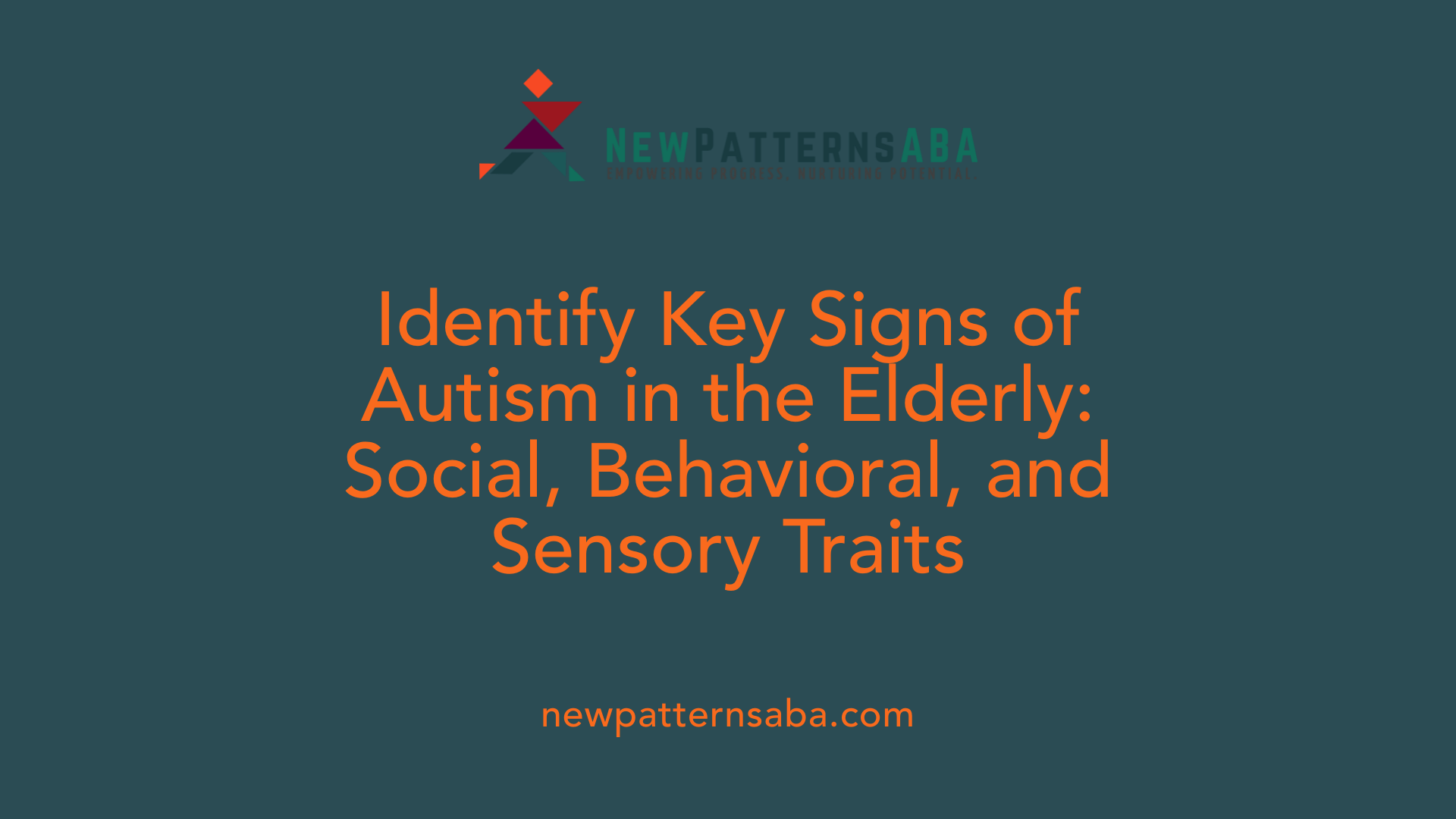
What are the symptoms and signs of autism in older adults?
Autism in older adults often shows through specific behavioral and sensory patterns. Difficulties in social communication are common, including struggles to interpret social cues, understand others' feelings, or maintain eye contact. These challenges can lead to social anxiety or withdrawal, often resulting in a sense of loneliness.
Repetitive behaviors and a preference for strict routines are also typical. Older adults with autism may have intense interests in particular topics and follow routines rigidly, which helps them feel more secure but can make adapting to change difficult.
Sensory sensitivities are prevalent among seniors with autism. They might become overwhelmed by lights, sounds, or smells, causing discomfort or distress. Additionally, executive functioning challenges—such as planning, organizing, or managing time—can affect daily life and increase the risk of social isolation.
Many older adults with autism also face co-occurring health issues. Mental health concerns like depression and anxiety frequently appear alongside physical conditions such as heart issues, gastrointestinal problems, or cognitive decline, including dementia.
Diagnosing autism at this stage can be complex, as symptoms may overlap with age-related health issues. Typically, diagnosis involves observing behaviors, assessing personal history, and gathering information from family or caregivers.
While the presentation varies, common traits to watch for include social difficulties, repetitive or routine behaviors, sensory sensitivities, and increased health risks. Recognizing these signs enables better support and tailored interventions to improve quality of life for older adults with autism.
| Symptom Area | Typical Signs | Additional Notes |
|---|---|---|
| Social Communication | Difficulty understanding social cues, limited eye contact, social withdrawal | Can be mistaken for depression or isolation due to aging |
| Repetitive Behaviors and Routines | Strict routines, focused interests | Routines provide comfort; change can increase stress |
| Sensory Sensitivities | Overreaction to lights, sounds, smells | Managing sensory overloads improves comfort |
| Executive Function Challenges | Planning difficulties, memory issues | Affects daily routines and independence |
Understanding these signs helps caregivers and health professionals provide appropriate support, ensuring seniors with autism maintain their well-being and independence.
Diagnosing Autism in the Elderly: Challenges and Opportunities
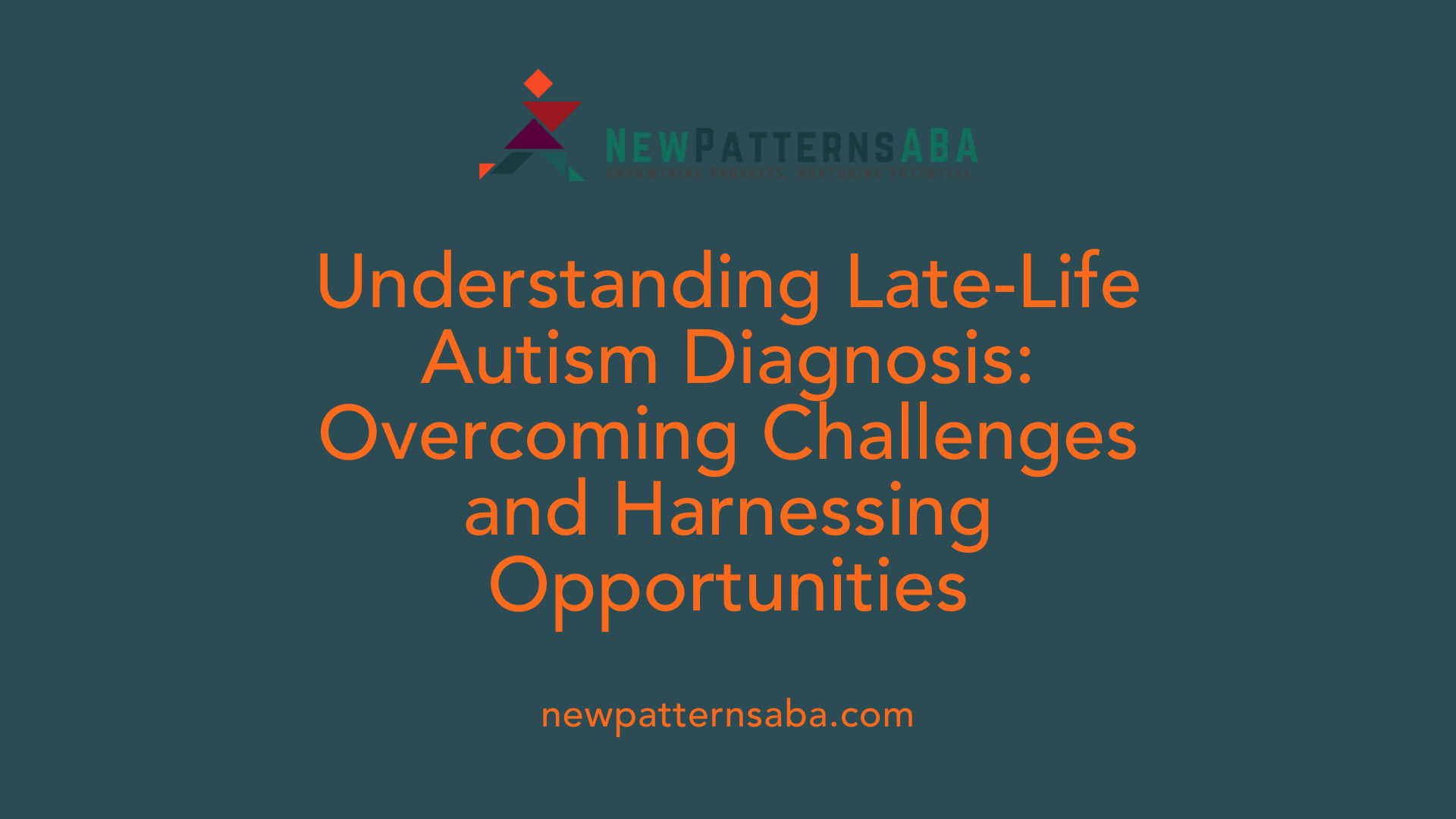
How is autism diagnosed in the elderly, and does diagnosis typically happen later in life?
Autism Spectrum Disorder (ASD) is often diagnosed during childhood; however, an increasing number of older adults are now being identified with autism later in life. This shift is mainly due to heightened awareness of the condition, better assessment procedures, and the realization that many individuals may have gone undiagnosed for years.
Diagnosing autism in elderly individuals presents unique challenges. Many symptoms can be hidden or masked by age-related health issues, mental health conditions, or the natural effects of aging. For example, social withdrawal or difficulty communicating might also be symptoms of depression or cognitive decline, making the diagnostic process more complex.
The process generally involves detailed behavioral observation, assessment of social and emotional behaviors, and understanding an individual’s routines and interests. It often requires input from family members or people who have known the individual for many years, as childhood behaviors are crucial in confirming an autism diagnosis.
Age and gender also influence diagnosis. Women with autism, for instance, may exhibit subtler signs that delay recognition. Additionally, as individuals age, some may develop coping strategies that lessen overt symptoms, further complicating identification.
Although autism does not tend to worsen as a person ages, existing health and social challenges can intensify or become more noticeable, prompting further investigation. Thus, diagnosis in later life often occurs when individuals or their families seek clarity, and obtaining a formal diagnosis can open doors to resources, tailored support, and emotional relief.
The increasing trend of late-life diagnoses due to greater awareness and improved assessment tools
In recent years, advances in understanding ASD and the development of specialized assessment tools have contributed to more late-life diagnoses. Tools like the Autism Healthcare Accommodations Tool (AHAT) facilitate better communication during clinical visits and help health professionals recognize autism-specific behaviors.
As societal awareness grows, more healthcare providers are considering autism as a possible explanation for social and behavioral difficulties among the elderly, especially those who have remained undiagnosed for decades. This trend highlights a broader recognition that autism can persist into older age and warrants attention throughout a person’s life.
Challenges posed by masking of symptoms and age-related conditions
Many autistic individuals develop coping mechanisms over their lifetime, which can mask symptoms and make diagnosis more difficult in older adults. For instance, they might consciously or unconsciously adopt social behaviors that conceal their difficulties, leading clinicians to overlook autism traits.
Furthermore, age-related medical conditions, such as cognitive impairments or sensory changes, can obscure or mimic ASD symptoms. This overlap can delay diagnosis or lead to misdiagnosis, impeding appropriate support and care.
The role of caregivers and family input in diagnosis
Given that many autism traits are observed over a lifetime, gathering detailed family history and input from caregivers or close contacts is essential. They can provide valuable insights into behaviors during childhood and ongoing patterns that are not always apparent in clinical settings.
Family members and caregivers also play a crucial role in supporting accurate assessment by helping clinicians understand the individual's history, sensory sensitivities, routines, and social interactions. Their involvement significantly enhances the precision of diagnosis, leading to better-tailored interventions.
| Aspect | Details | Additional Notes |
|---|---|---|
| Diagnostic Approach | Behavioral observations, personal history, input from family | Adapted for older adults with complex health issues |
| Challenges | Symptom masking, comorbid conditions | Can obscure or mimic autism traits |
| Importance of Family | Providing childhood behaviors, routines, sensitivities | Enhances accuracy of diagnosis |
| Trends | Increased awareness, better tools | More diagnoses in later life |
Care Strategies and Environmental Adjustments for Elderly with Autism
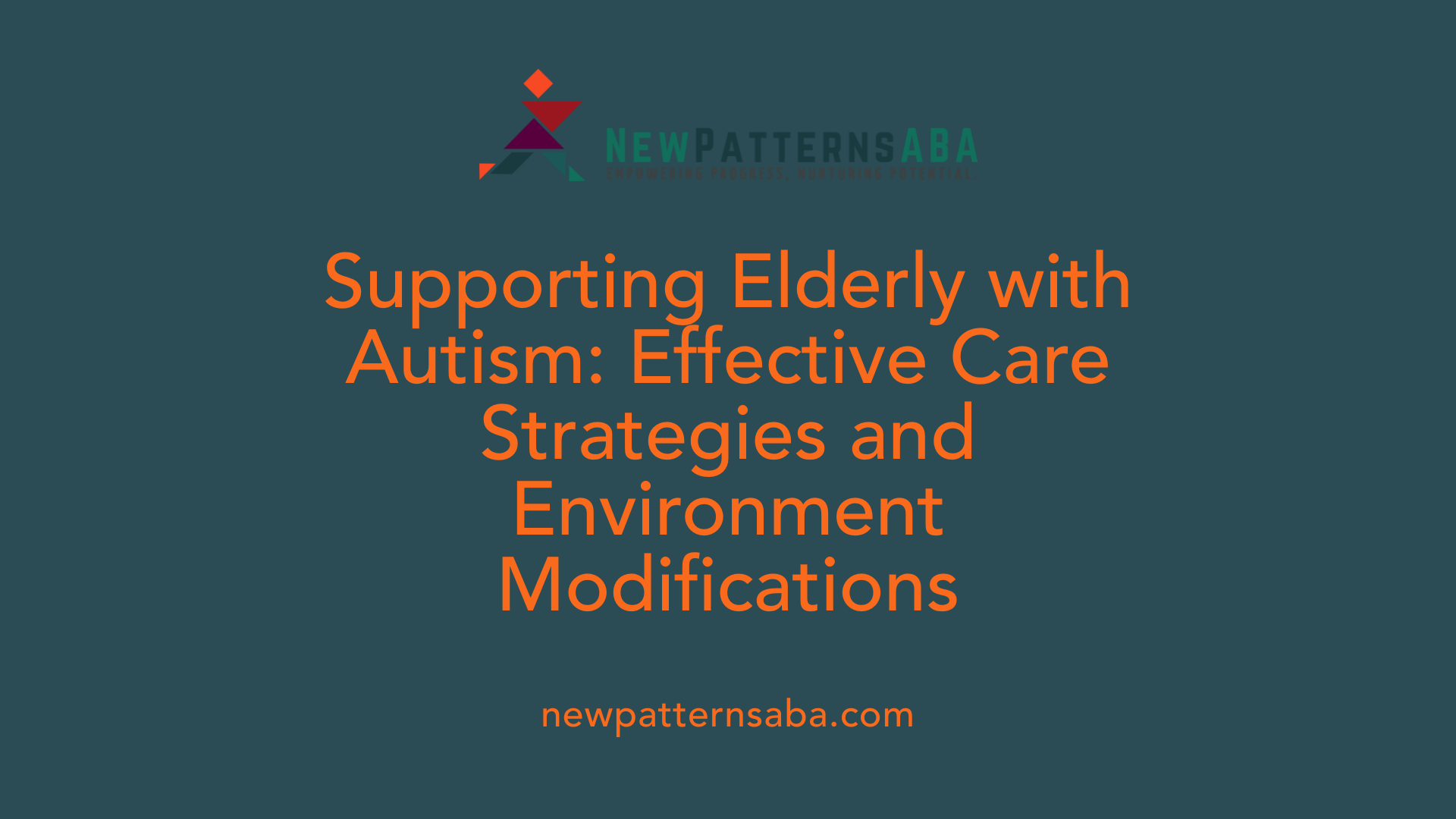
What are effective care strategies and support practices for elderly individuals with autism?
Providing appropriate care for older adults with autism involves several thoughtful strategies aimed at promoting their independence and emotional well-being. Establishing structured routines helps create a sense of stability, which is particularly important as their needs may change with age. Consistent daily schedules can reduce anxiety and help manage behaviors by giving predictability to their day.
Creating a safe environment is equally vital. This includes making modifications such as removing hazards like slippery floors, clutter, or sharp objects, and installing safety features like grab bars or support rails. These adjustments support their independence and reduce the risk of injury.
Supporting social engagement is beneficial, especially through support groups or community activities, at a pace comfortable for the individual. Such engagement can improve emotional health and decrease feelings of isolation.
Care practices also involve managing sensory sensitivities. Many with autism experience heightened reactions to noises, lights, and smells. Minimizing these triggers—perhaps with noise-canceling headphones, soft lighting, or scent-free spaces—can significantly improve comfort.
Family involvement remains central. Support from loved ones helps foster self-esteem, ensures consistent medical follow-up, and provides emotional stability. It is crucial for caregivers to maintain personalized communication, using clear and specific questions, and to monitor for signs of mental health issues or cognitive decline.
Clinicians should adopt a comprehensive approach, including mental health support and monitoring for co-occurring health conditions such as gastrointestinal or sleep issues. Tailored psychotherapy and community connection devices contribute significantly to an improved quality of life.
Furthermore, interdisciplinary teams comprising health professionals like nurses, psychiatrists, therapists, and primary care physicians should conduct regular assessments to adapt care plans as the individual’s needs evolve. Utilizing tools like the Autism Healthcare Accommodations Tool (AHAT) can help facilitate effective communication and tailored care, ensuring that each elder with autism receives respectful and appropriate support.
Overall, a combination of structured routines, safe environments, social support, and personalized healthcare strategies can greatly enhance the living experience of seniors on the spectrum, helping them maintain dignity and independence well into later years.
Healthcare Needs and Medical Considerations in Aging Autistic Adults
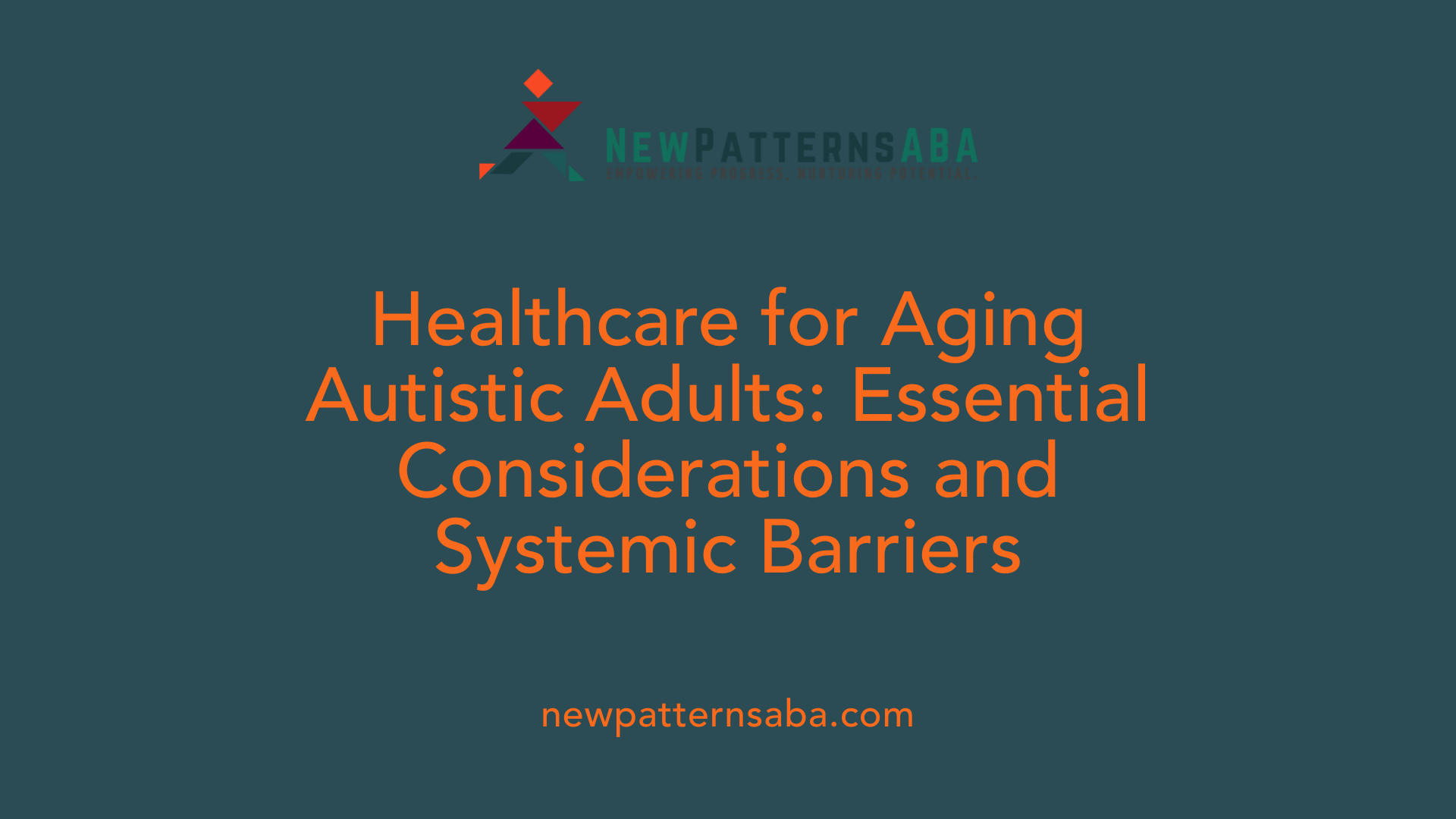
What healthcare considerations are important for autistic seniors?
As individuals with autism age, their healthcare needs become more complex, requiring a tailored and comprehensive approach. Healthcare providers should perform detailed assessments that not only focus on common age-related health conditions—such as osteoporosis, diabetes, and cardiovascular issues—but also consider autism-specific factors. This includes evaluating sensory sensitivities, communication styles, and behavioral health.
Screenings for mental health issues like anxiety, depression, and PTSD are essential, especially since these can significantly impact overall well-being. Additionally, neurological conditions such as seizure disorders, Parkinson’s disease, and signs of cognitive decline should be monitored regularly. Sensory sensitivities—like heightened reactions to noise, lights, and smells—must be recognized and accommodated within healthcare settings to create a more comfortable environment.
Addressing gaps in healthcare access is critical. Many autistic older adults face systemic barriers, including limited provider training, insurance challenges, and a shortage of specialists knowledgeable about autism in the context of aging. Implementing sensory-friendly, quiet spaces and using tools such as visual aids or communication boards can improve appointment experiences.
Ensuring proper preventive care—like bone density scans, vaccinations, and routine screenings—is vital for maintaining health. Multidisciplinary teams comprising primary care physicians, neurologists, mental health professionals, and behavior analysts should collaborate to develop personalized care plans. Such coordinated efforts promote safety, reduce stress during medical visits, and support overall health in aging autistic adults.
How can healthcare gaps and systemic barriers be addressed?
Overcoming systemic barriers involves training healthcare providers in autism-informed care tailored for older adults. This includes understanding age-related changes, behavioral cues, and effective communication strategies.
Advocacy for policy changes aimed at improving insurance coverage and expanding access to specialized services is essential. The use of assessments like the Autism Healthcare Accommodations Tool (AHAT) and tools such as the Vial of LIFE can facilitate better communication and medical history sharing.
Healthcare settings should be adapted to reduce sensory overload, such as eliminating harsh lighting or loud noises and minimizing clutter. These modifications can make a significant difference in making healthcare experiences less stressful.
Addressing these systemic issues not only improves health outcomes but also enhances quality of life for autistic seniors, allowing them to receive care that respects their unique needs.
Why is specialized training important for healthcare providers?
Many healthcare providers currently lack specialized training in autism, particularly in how it intersects with aging. This gap can lead to misdiagnosis, overlooked health concerns, and ineffective communication.
Training programs should incorporate modules on the typical presentation of autism in older adults, emphasizing behavioral observation, sensory sensitivities, and appropriate communication techniques. Educating providers about the common comorbidities—such as gastrointestinal issues, sleep disturbances, and mobility challenges—is also critical.
Enhanced training ensures that healthcare professionals can recognize subtle symptoms, interpret non-verbal cues accurately, and develop supportive care strategies. It also fosters a more welcoming and understanding environment, encouraging autistic seniors to seek and engage in necessary healthcare services.
Ultimately, equipping healthcare workers with this specialized knowledge will lead to better health outcomes, decreased healthcare disparities, and a higher standard of person-centered care for aging individuals on the autism spectrum.
| Aspect | Consideration | Additional Details |
|---|---|---|
| Assessments | Comprehensive medical, mental health, and behavioral evaluations | Include sensory sensitivities and routines |
| Screenings | Regular checks for osteoporosis, diabetes, mental health, and neurological issues | Tailored to age and individual needs |
| Healthcare Environment | Sensory-friendly, calm settings | Reduce noise, bright lights, clutter |
| Communication | Clear, direct questions; use visual aids; monitor non-verbal cues | Support understanding and comfort |
| Provider Training | Autism-specific, age-aware training for healthcare staff | Focus on communication and behavioral cues |
| Systemic Barriers | Insurance issues, lack of specialized providers, policy support | Advocate for systemic change |
Properly addressing these aspects ensures that older adults with autism receive respectful, effective, and holistic healthcare, promoting their independence and quality of life.
Resources and Support Systems for Caregivers
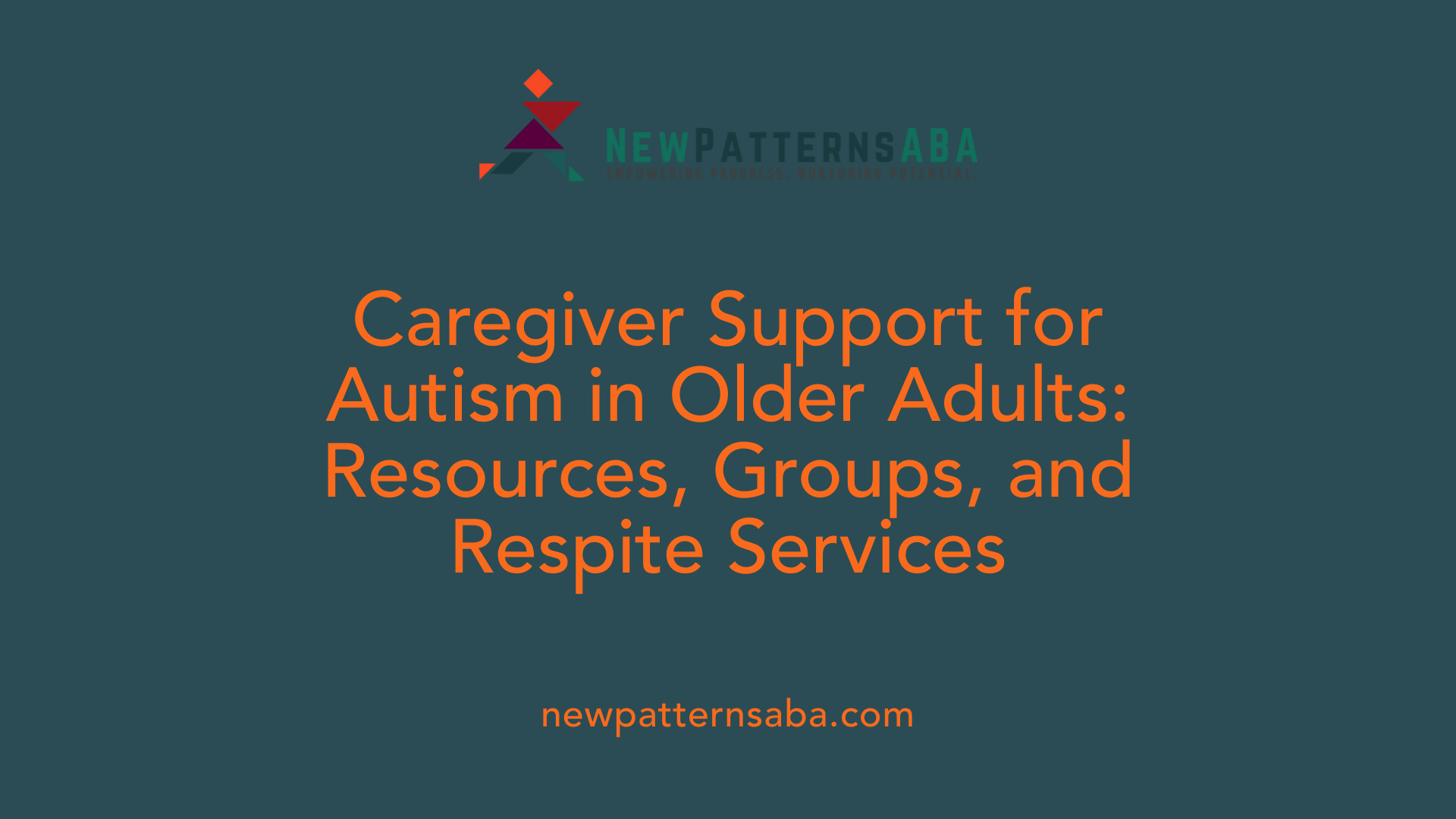
What resources and support options are available for caregivers of elderly individuals with autism?
Caring for an elderly person with autism presents unique challenges, but many organizations and programs are dedicated to supporting caregivers. One prominent organization, Autism Speaks, offers comprehensive resources such as the Caregiver Skills Training (CST) program. This program helps caregivers develop effective strategies for managing behaviors and advocating for their loved ones. Autism Speaks also provides detailed guides, a support helpline, and an autism response team to connect caregivers with local community services and specialized healthcare.
Support groups are another vital resource. These groups, available both in person and online, offer emotional support and the chance to share practical advice with others facing similar challenges. Popular online communities include Facebook support groups and MyAutismTeam, where caregivers can exchange experiences and gain encouragement.
Respite care services are essential for providing temporary relief from caregiving duties. These include short-term in-home care, adult day programs, and residential supports funded through Medicaid waivers. Such services help reduce stress, prevent burnout, and maintain the stability of seniors with autism.
In addition, specialized organizations like the Autism Housing Network provide guidance on housing options suited for aging individuals with autism. Autism Navigator offers resources on transition and ongoing support, while advocacy groups like the Autistic Self Advocacy Network (ASAN) and the Autism Society promote policy changes and awareness.
Overall, a combination of community programs, healthcare guidance, and peer support can greatly enhance the caregiving experience and improve quality of life for both caregivers and seniors with autism.
Resources at a glance
| Organization | Services Offered | Focus Area | Contact/Website |
|---|---|---|---|
| Autism Speaks | CST program, guides, support helpline | Training and Resources | autismspeaks.org |
| Autism Society | Advocacy, local support groups | Advocacy and Community Support | autism-society.org |
| Autism Housing Network | Housing options and planning | Housing Support | autismhousingnetwork.org |
| Autism Navigator | Transition support, resource guides | Education and Support | autismnavigator.com |
| MyAutismTeam | Online support community | Peer Support | myautismteam.com |
Guidelines for engaging in effective caregiving
- Seek out and utilize available local and national resources.
- Join support groups to connect with others and reduce feelings of isolation.
- Advocate for health care and housing adjustments tailored to aging individuals with autism.
- Ensure consistent routines, a safe environment, and attentiveness to sensory needs.
- Engage in ongoing education about autism in older adults and the aging process.
- Involve family and community services early to build a comprehensive support plan.
Understanding and accessing the right tools and community support can significantly improve the caregiving experience, ensuring that seniors with autism receive respectful, appropriate, and effective care.
The Need for Specialized Training and Interdisciplinary Care Models

What healthcare considerations are important for autistic seniors?
Providing healthcare for older adults with autism requires a comprehensive, personalized approach. It involves addressing common age-related health issues like cardiovascular health, bone density, and diabetes while also considering autism-specific needs such as sensory sensitivities and communication challenges.
Autistic seniors often experience co-occurring mental health conditions, including anxiety and depression, which need to be recognized and managed. Additionally, neurological conditions like dementia and Parkinson’s disease may develop, requiring tailored assessments and interventions.
Effective care involves improving healthcare providers' training to understand autism across all ages. This enhances communication, comfort, and safety during medical visits. Accommodations, such as quiet and sensory-friendly environments, help reduce stress and facilitate better healthcare experiences.
Addressing systemic access barriers, including gaps in insurance coverage and shortages of specialized providers, is vital. Implementing systemic changes and offering supportive services ensures that autistic seniors can receive equitable, high-quality care.
Ultimately, a multidisciplinary, coordinated healthcare model is essential. Such a model involves collaboration among primary care providers, mental health professionals, neurologists, physical therapists, and behavior specialists, all working together to meet the holistic needs of aging autistic individuals.
Benefits of interdisciplinary teams including specialists like physical therapists, behavior analysts, and psychiatrists
Interdisciplinary teams bring together diverse expertise crucial for managing the complex health profiles of autistic seniors. Physical therapists assess mobility and gait issues, offering strategies to maintain independence.
Behavior analysts provide insights into behavioral patterns and develop management plans that improve daily functioning and reduce stress triggers.
Psychiatrists and psychologists address mental health concerns, including anxiety and depression, which are common in aging autistic adults.
This collaborative approach ensures that care is well-rounded, addressing medical, behavioral, and emotional needs comprehensively. It also facilitates better communication among providers, reducing fragmentation and improving patient outcomes.
Importance of ongoing assessment and individualized care plans
Regular assessments are critical to adapting care plans as needs change over time. Evaluations should include physical health, medication effects, behavioral status, communication abilities, and environmental safety.
Individualized care plans based on thorough assessments help optimize support and minimize health risks. They also promote stability and happiness by aligning interventions with personal preferences and capabilities.
Ongoing assessment facilitates early detection of emerging issues, allowing timely adjustments that prevent complications and improve quality of life.
Emerging research gaps in pain management and long-term support
Despite the growing recognition of autism in older adults, significant gaps remain in understanding effective pain assessment, medication management, and long-term care strategies.
Research is needed to develop reliable tools for pain detection that are suitable for individuals with communication challenges. Studies should also explore the long-term impact of aging with autism, including cognitive decline and comorbid conditions.
Addressing these gaps through targeted research will enable healthcare providers to offer more effective, evidence-based interventions tailored to the unique needs of aging autistic adults, ultimately improving their health and safety.
Housing, Community Support, and Policy Advocacy
As the population of older adults with autism increases, developing appropriate housing options has become a critical focus. Supportive community homes and assisted living facilities tailored for seniors with autism offer vital environments that accommodate their unique needs. These residences often feature modifications such as sensory-friendly spaces, secure environments, and adaptation for mobility challenges. Well-trained staff, including behavioral specialists, nurses, and support workers, are essential in ensuring quality care. Their knowledge of the aging process and autism-specific strategies helps in managing health, behavioral changes, and daily routines effectively.
Community integration programs play a key role in enhancing social engagement and reducing isolation among elderly with autism. Local social opportunities, support groups, and recreational activities designed for seniors promote connectivity and a sense of belonging. Participation in these programs can improve mental health, boost confidence, and provide necessary social support.
Advocacy efforts are also transforming policy landscapes to better serve aging autistic individuals. These include campaigns for improved healthcare access, funding for specialized housing, and training initiatives for healthcare professionals. Policy changes aim to bridge gaps in routine screening, diagnosis, and ongoing support, ensuring that seniors receive personalized and comprehensive care.
Resources and Support Options for Caregivers of Elderly Individuals with Autism
Caregivers hold a pivotal role in supporting elderly individuals with autism. Several resources are available to assist them. Organizations like Autism Speaks provide caregiver training programs, informational guides, and a dedicated autism response team to connect families with community services. Support groups, both in-person and online (such as Facebook groups or MyAutismTeam), offer emotional support and shared experiences.
Respite care services, Medicaid-funded residential programs, and day programs help reduce caregiver stress and enhance stability for seniors with autism. Resources like the Autism Housing Network, Autism Navigator, the Autism Society, and Advocates for Autism engage in guiding families towards suitable housing and navigating complex healthcare systems.
Efforts to improve awareness, training, and policy reform are ongoing, aiming to create a supportive infrastructure that meets the evolving needs of aging autistic individuals.
| Housing Options | Description | Additional Support |
|---|---|---|
| Community Homes | Small, supportive residential settings adapted for sensory and mobility needs | Trained staff, sensory modifications |
| Assisted Living | Facilities offering personalized care with focus on safety and independence | Behavioral support, medical care |
| Specialized Housing | Housing units designed with autism-friendly features | Environmental adjustments, community integration programs |
Search Query for Further Research
For those interested in exploring more about housing options for elderly with autism, searching "housing options for elderly with autism" can provide detailed insights into available facilities, modifications, and support networks specialized for aging individuals on the spectrum.
The Future of Autism Elderly Care: Challenges and Opportunities

What are effective care strategies and support practices for elderly individuals with autism?
Supporting older adults with autism requires a tailored approach that emphasizes stability, safety, and social engagement. One of the foundational strategies is establishing a consistent daily routine. This routine helps foster a sense of stability and confidence, which is especially important as seniors experience age-related changes.
Creating a safe and sensory-friendly environment is essential. This includes reducing noise, bright lights, and strong smells that can cause sensory overload. Safety features like grab bars, slip-resistant flooring, and clutter-free spaces help prevent accidents and maintain independence.
Supporting social interaction through gradual engagement in community groups or support networks can improve mood and reduce feelings of isolation. It’s important to respect each individual’s comfort levels and tailor activities accordingly.
Care practices should incorporate environmental modifications. Minimizing sensory triggers and offering specific safety adaptations can significantly enhance their quality of life. Family involvement is critical, as family members can provide emotional support, ensure regular medical checkups, and help foster a positive self-image.
Communication with seniors can be improved by using clear, direct questions and being attentive to non-verbal cues. Clinicians need to monitor for co-occurring health issues such as mental health challenges or age-related cognitive decline, providing interventions as needed.
Psychotherapy, counseling, and community support programs are valuable tools for improving mental well-being. Overall, these approaches aim to enhance independence, safety, and emotional health, ensuring a dignified and fulfilling life for seniors on the autism spectrum.
Projected increases in the aging autistic population and healthcare demand
Research indicates that the number of older adults diagnosed with autism is set to rise significantly. It’s estimated that by 2035, approximately 155,000 individuals over 65 will have ASD. This increase aligns with data showing a prevalence rate of about 2.2% in adults aged 18–84.
This demographic shift presents substantial challenges for healthcare systems. Autistic seniors often have complex medical profiles, with higher rates of conditions such as gastrointestinal issues, seizures, hypertension, and Parkinson’s disease. Additionally, mental health problems like anxiety, depression, and social isolation are prevalent.
Since autism traits do not necessarily worsen with age but may become more noticeable due to aging or coping strategies, caregivers and clinicians need to adapt their assessment tools and treatment plans.
The growing demand highlights the urgent need for specialized healthcare services trained in autism care tailored for the elderly population.
The importance of policy and research investment
Addressing the anticipated rise in aging individuals with autism requires significant investment in research and policy. Currently, there are gaps in routine screening, diagnosis, and treatment protocols for older adults.
Expanding research into lifelong autism care can help develop evidence-based practices specifically suited for seniors. Innovative tools like the Autism Healthcare Accommodations Tool (AHAT) and Vial of LIFE facilitate better communication and medical history sharing.
Policy changes should promote integration of autism-specific training in healthcare education, emphasizing adult and geriatric autism. Funding for community programs, residential support, and healthcare training is crucial in creating a comprehensive support system.
Emerging models of integrated care and community support
New models focus on interdisciplinary, person-centered care that combines medical, behavioral, and social services. Regular assessments led by teams including physicians, nurses, therapists, and social workers help monitor physical health, mental well-being, and behavioral changes.
Residential communities with trained staff can provide supportive environments that adapt to evolving needs, such as mobility decline or sensory sensitivities. Environmental modifications and personalized care plans are key.
Community engagement through support groups and recreational activities enhances social functioning and reduces isolation. These models emphasize teamwork, caregiver support, and community involvement to optimize quality of life.
Addressing systemic gaps in training and services
Despite the growing need, many healthcare providers lack specialized training in autism care for the elderly. This results in diagnostic delays and inadequate treatment.
Increasing education for caregivers and medical staff about aging with autism is necessary. Training should cover behavioral management, communication strategies, and understanding comorbid health conditions.
Tools such as the Autism Healthcare Accommodations Tool (AHAT) and shared medical histories improve care coordination. Advocacy efforts must push for policy reforms that prioritize autism in health care planning.
In conclusion, meeting the needs of the aging autistic population requires concerted efforts in research, policy, and service delivery. Innovative, interdisciplinary approaches will be essential in expanding access, improving care quality, and ensuring dignity for seniors with autism.
Advancing Toward Inclusive and Supportive Elderly Autism Care
As the population of elderly individuals with autism continues to grow, the healthcare and caregiving systems must adapt to meet their unique needs. This entails increasing awareness, improving diagnostic practices, providing tailored interventions, and fostering community and policy support. By building multidisciplinary teams, offering specialized training, and expanding resources, society can enhance the quality of life for older adults with autism, ensuring they receive compassionate, effective, and respectful care throughout their aging journey.
References
- Caring for Seniors with Autism | Senior Care - Parent Giving
- Understanding autism in older adults - Elder.org
- Caring for Seniors with Autism
- Challenges of Medical Care for Seniors - Autism Research Institute
- Adults and Seniors with Autism Spectrum Disorder: Implications for ...
- Supporting Older Adults with Autism - Autism Spectrum News
- Signs of autism in adults - NHS
- Understanding autism in older adults - Elder.org
- Signs of autism in adults
- Autism in Older Adults: Challenges, Treatment, and Support





